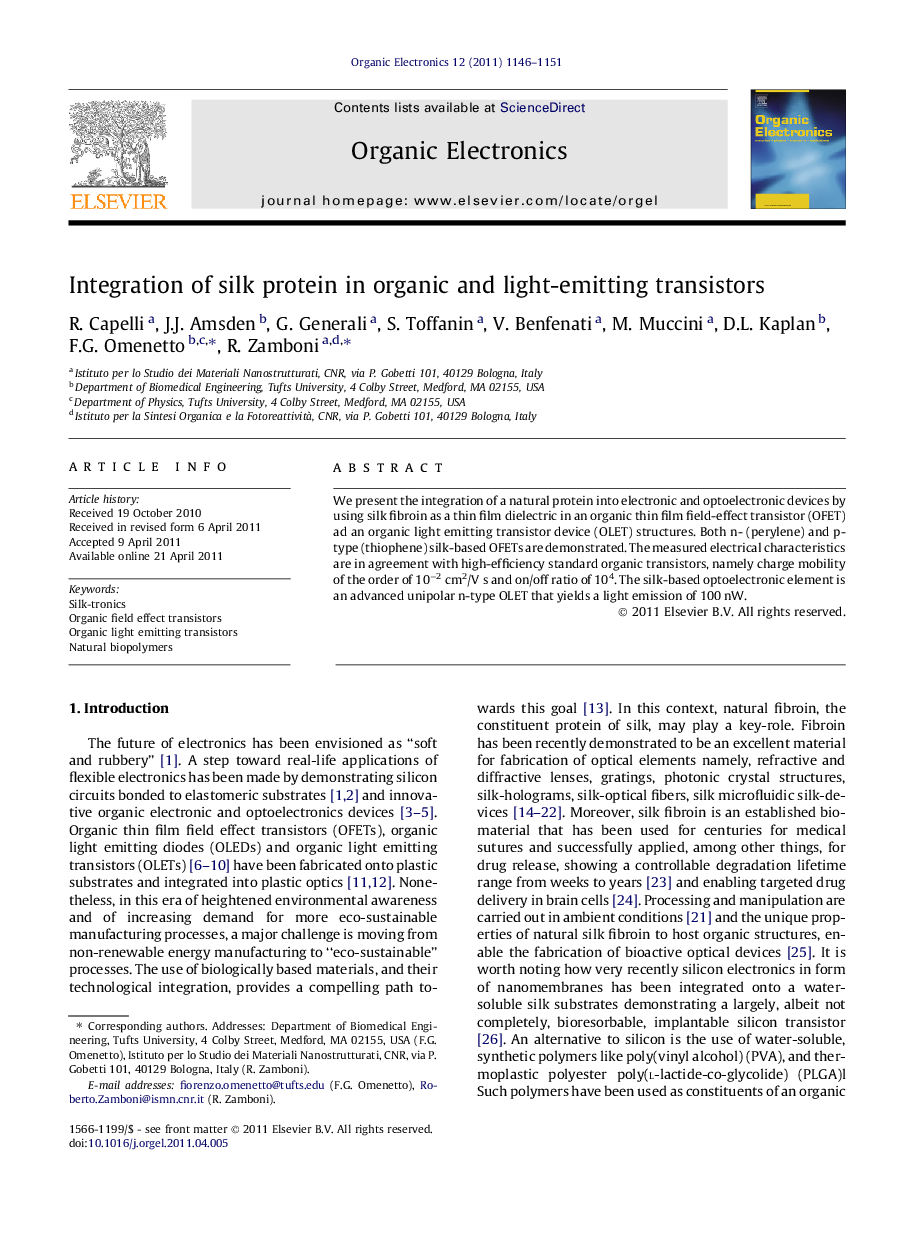| Article ID | Journal | Published Year | Pages | File Type |
|---|---|---|---|---|
| 1264082 | Organic Electronics | 2011 | 6 Pages |
We present the integration of a natural protein into electronic and optoelectronic devices by using silk fibroin as a thin film dielectric in an organic thin film field-effect transistor (OFET) ad an organic light emitting transistor device (OLET) structures. Both n- (perylene) and p-type (thiophene) silk-based OFETs are demonstrated. The measured electrical characteristics are in agreement with high-efficiency standard organic transistors, namely charge mobility of the order of 10−2 cm2/V s and on/off ratio of 104. The silk-based optoelectronic element is an advanced unipolar n-type OLET that yields a light emission of 100 nW.
Graphical abstractFigure optionsDownload full-size imageDownload as PowerPoint slideHighlights► We demonstrate how a natural protein, silk-fibroin, can be integrated as an efficient dielectric into organic optoelectronic devices, replacing traditional inorganic oxide layers such as SiO2, plastic PMMA, or other synthetic organic materials. ► We demonstrate how natural silk fibroin can be successfully used as a dielectric material for fabrication of competitive state of the art n- and p-type silk-based organic transistors. ► We demonstrate an advanced silk-based optoelectronic device namely, an unipolar n-type organic light-emitting transistors. ► We demonstrate how biologically based materials, and their technological integration, can enable eco-sustainable manufacturing processes.
